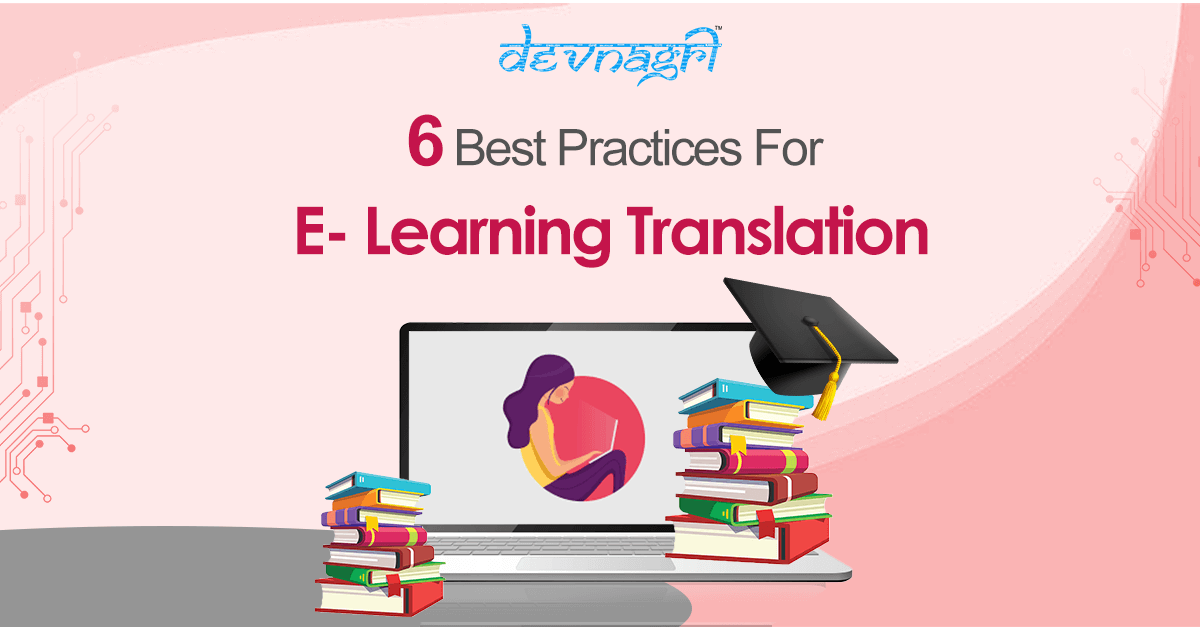
In our globalized world, eLearning has become an important way for people to learn new things and improve their skills. However, learners may not be able to access educational content because of language barriers. That is where eLearning translation comes in. It lets learners access learning materials in their language. For eLearning translation to work well, it is important to follow some best practices. In this article, we will discuss the six best ways to translate eLearning in more depth.
Also Read: The Importance of Translation & Localization in Digital Finance and Fintech
Work with Professional Translators
Quality eLearning translation starts with working with professional translators who know a lot about eLearning translation. Professional translators are fluent in the language they are translating into and know much about the terms used in eLearning materials. They can ensure that the translated content is correct and conveys the message well. Professional translators can also advise on how to explain ideas and concepts to the target audience in the best way.
Also Read: Everything you should know about website localization!
Use Translation Memory
Translation memory is a tool that saves content that has already been translated and suggests translations for content that is similar. It ensures that all the translated content uses the same terms and language. Using a translation memory can save time and money when translating eLearning content, especially when there is a lot of it. Translation memory can also help ensure that the terms and language used in different courses are the same. This is especially important for students who are taking more than one course.
Also Read: National Language of India: Hindi, English, or Other?
Test the Translated Content with Native Speakers
A very important part of the eLearning translation process has native speakers test the translated content. Native speakers are the best ones to review the content and ensure it is correct and easy to understand. They can find any mistakes or cultural differences that might have been missed when translating the text. This step helps ensure that the content is right for the audience and fits their culture.
Also Read: Maximizing productivity with an image to text converter online: a comprehensive guide
Incorporate Cultural Adaptation
It is important to include cultural adaptation to ensure that the translated content is culturally relevant and appropriate for the target audience. Adapting the translated content to the target audience’s culture means changing it. This process involves knowing how the cultures of the source language and the target language are different and changing the content to fit those differences. By considering cultural differences, eLearning translation can be more effective and make it easier for learners to understand the content.
Also Read: How DOTA is revolutionizing language translation in the digital age?
Use Visual Aids
Visual aids like pictures and videos are good ways to explain complicated ideas and concepts in eLearning materials. No matter what language a learner speaks, visual aids in eLearning translation can help them understand the content better. Visual aids can also help learners who do not speak the same language and learn differently understand the material. Using visual aids in eLearning translation can improve the learning experience and help people learn more.
Also Read: Qualities of a Good Website Translator
Maintain Consistency
Consistency in translated content is critical, especially when there is much content to translate. Consistency ensures that the content that has been translated is clear and that there are no differences in the message being sent. It is important to use the same terms and language throughout the translated content so that people can easily understand it. Using a style guide and regular quality assurance checks on the translated content can help keep things consistent.
E-learning translation is an important tool for breaking down language barriers in education. By following these best practices, you can ensure that eLearning translation works well, leading to better learning outcomes.
For eLearning translation, the six best practices are to use professional translators, use translation memory, test the translated content with native speakers, including cultural adaptation, use visual aids, and stay consistent.
As eLearning continues to grow in popularity, eLearning translation will become more important to make sure that all learners, no matter what language they speak, have equal access to education.




